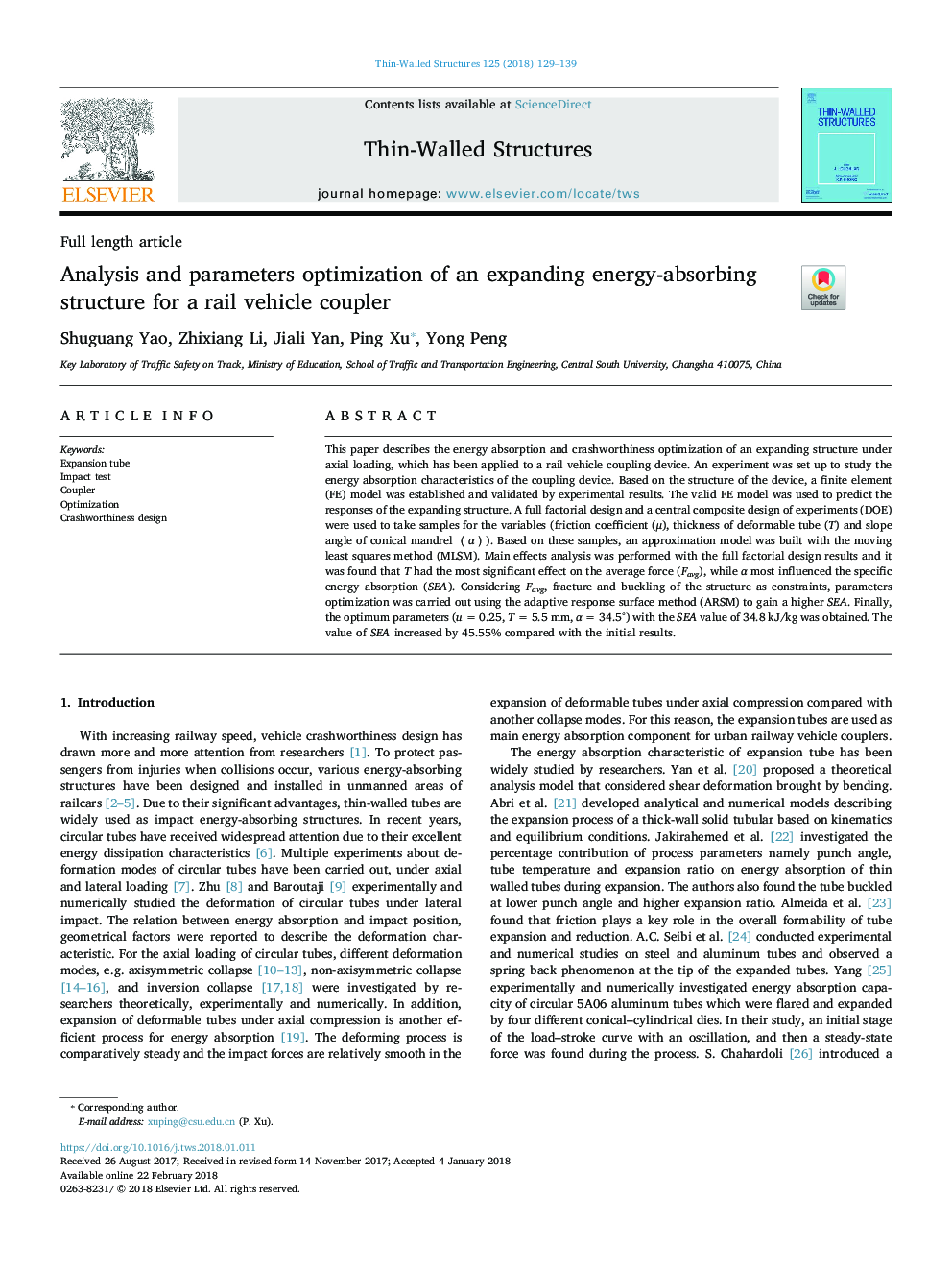| Article ID | Journal | Published Year | Pages | File Type |
|---|---|---|---|---|
| 6778051 | Thin-Walled Structures | 2018 | 11 Pages |
Abstract
This paper describes the energy absorption and crashworthiness optimization of an expanding structure under axial loading, which has been applied to a rail vehicle coupling device. An experiment was set up to study the energy absorption characteristics of the coupling device. Based on the structure of the device, a finite element (FE) model was established and validated by experimental results. The valid FE model was used to predict the responses of the expanding structure. A full factorial design and a central composite design of experiments (DOE) were used to take samples for the variables (friction coefficient (μ), thickness of deformable tube (T) and slope angle of conical mandrel ï¼Î±ï¼). Based on these samples, an approximation model was built with the moving least squares method (MLSM). Main effects analysis was performed with the full factorial design results and it was found that T had the most significant effect on the average force (Favg), while α most influenced the specific energy absorption (SEA). Considering Favg, fracture and buckling of the structure as constraints, parameters optimization was carried out using the adaptive response surface method (ARSM) to gain a higher SEA. Finally, the optimum parameters (u = 0.25, T = 5.5 mm, α = 34.5°) with the SEA value of 34.8 kJ/kg was obtained. The value of SEA increased by 45.55% compared with the initial results.
Related Topics
Physical Sciences and Engineering
Engineering
Civil and Structural Engineering
Authors
Shuguang Yao, Zhixiang Li, Jiali Yan, Ping Xu, Yong Peng,
